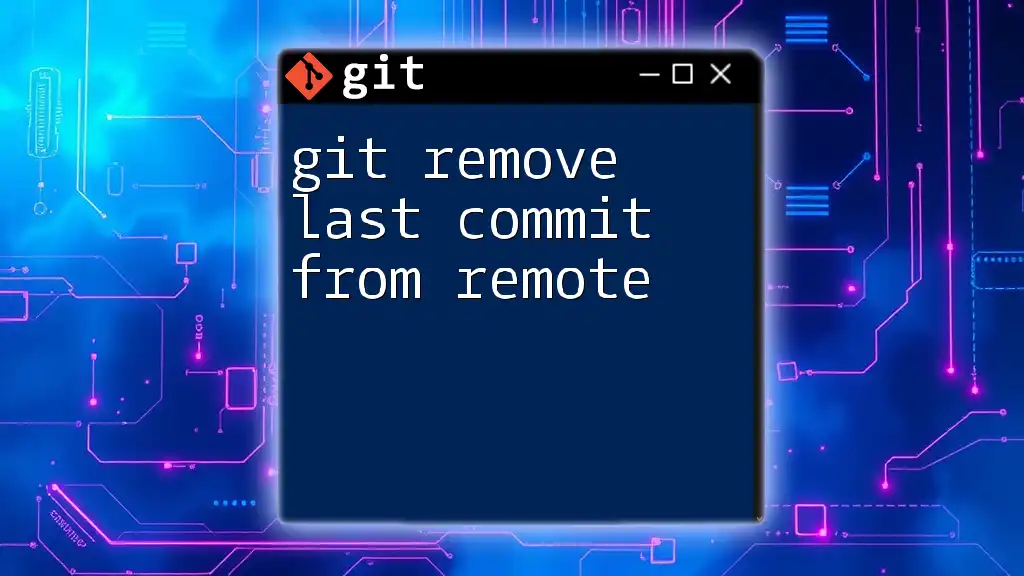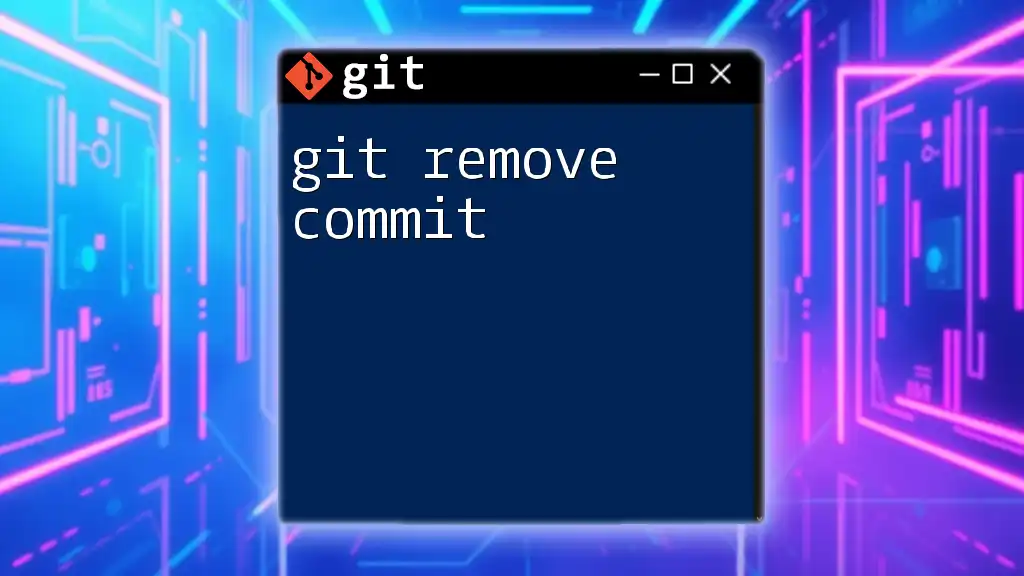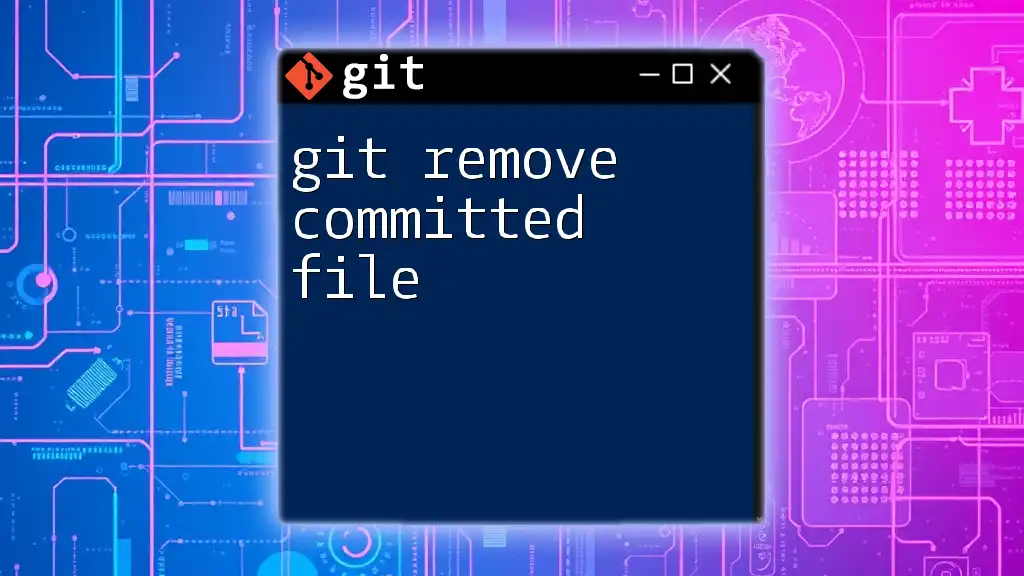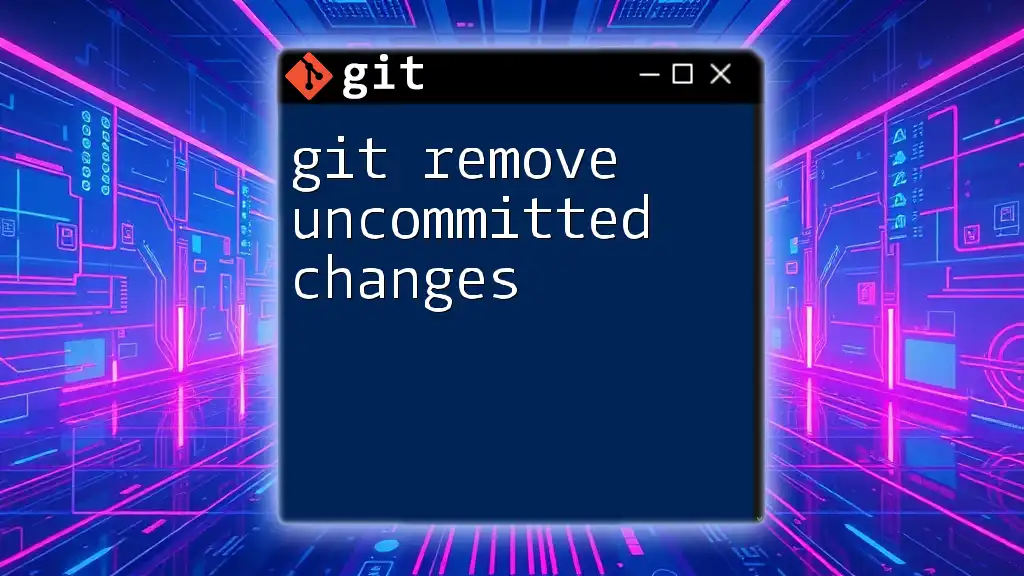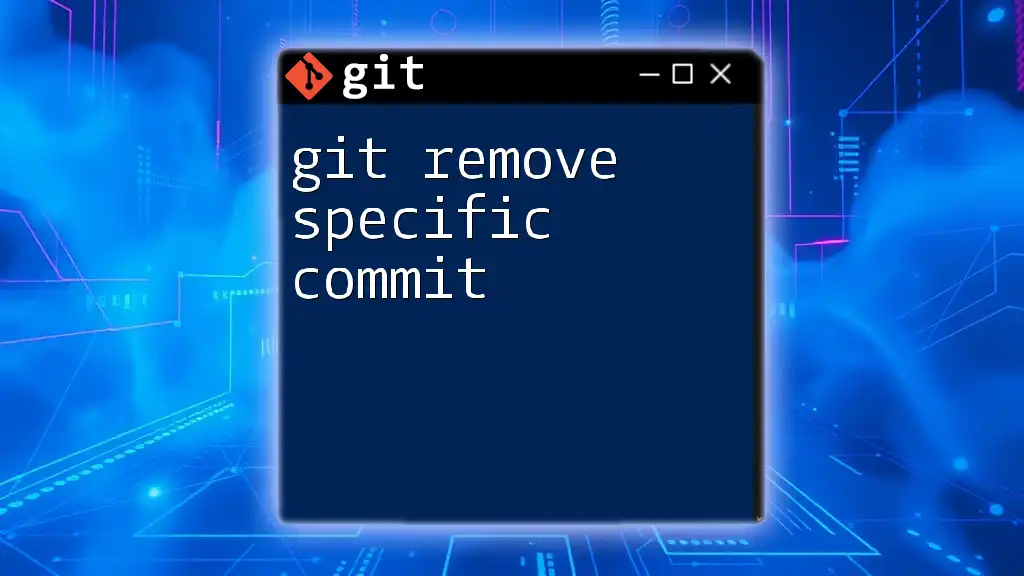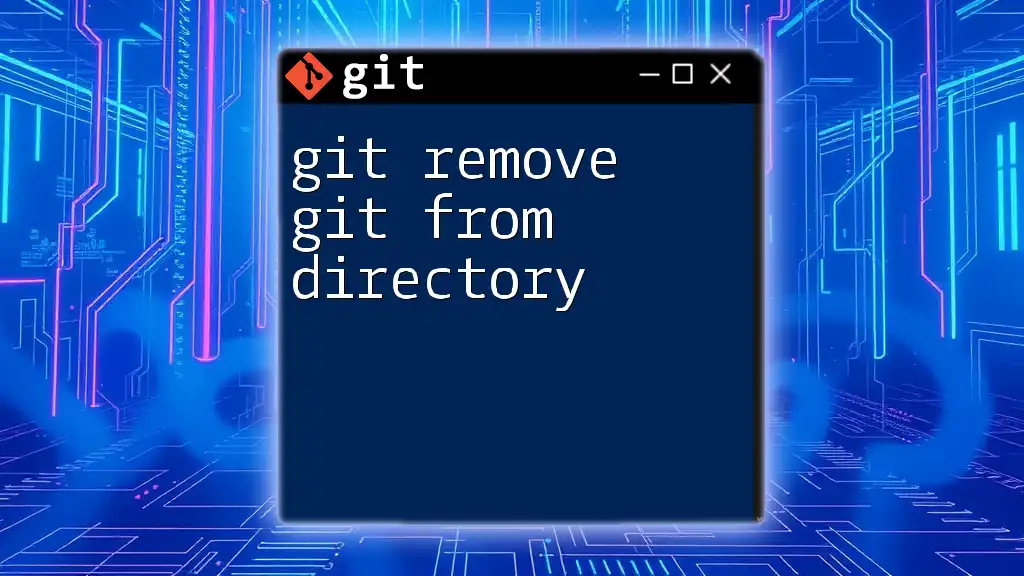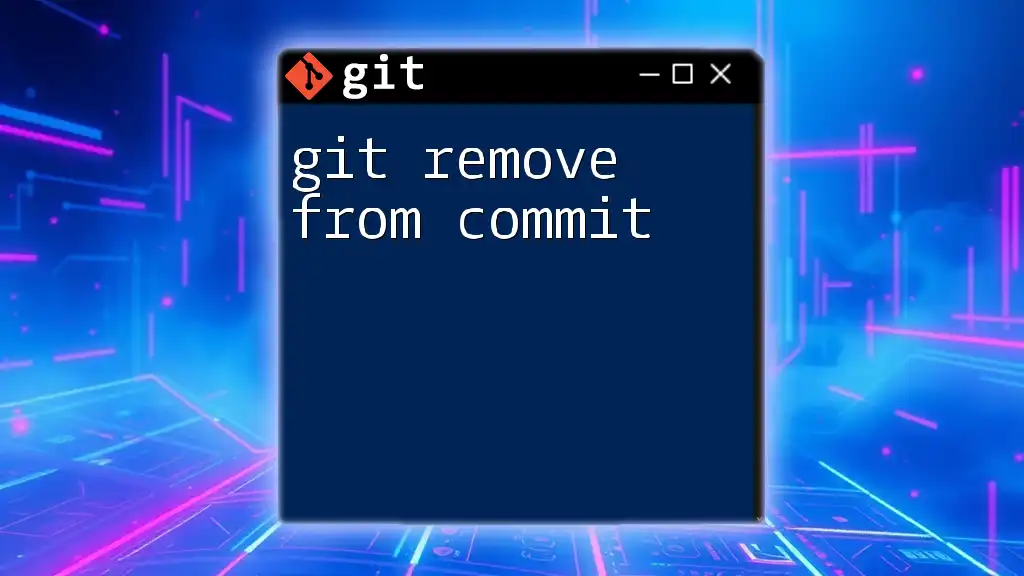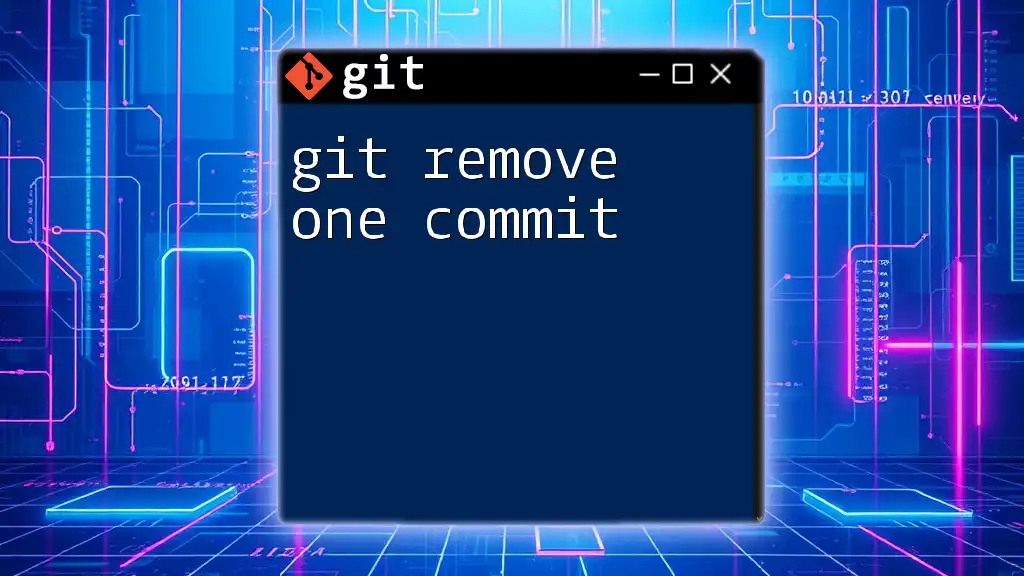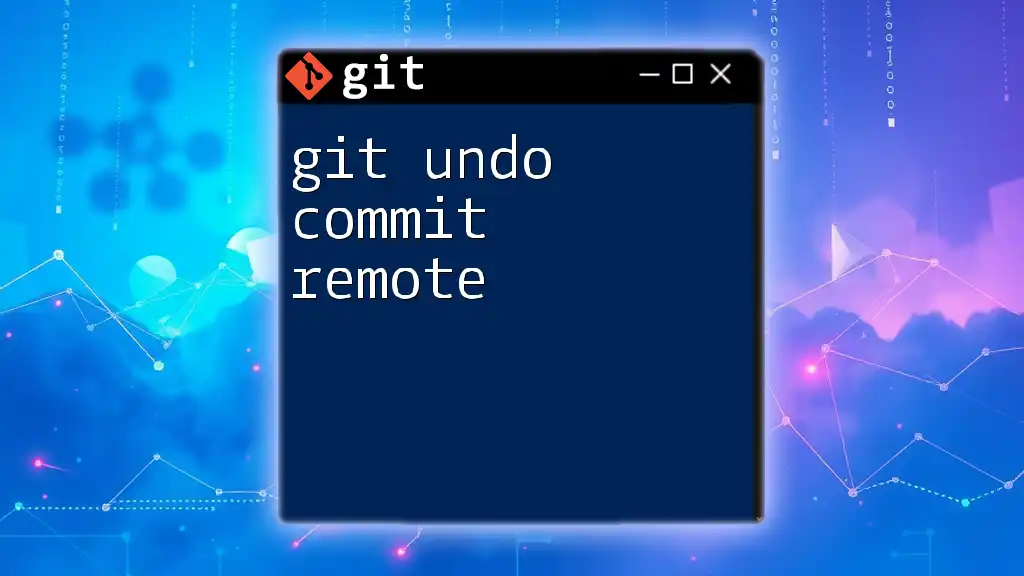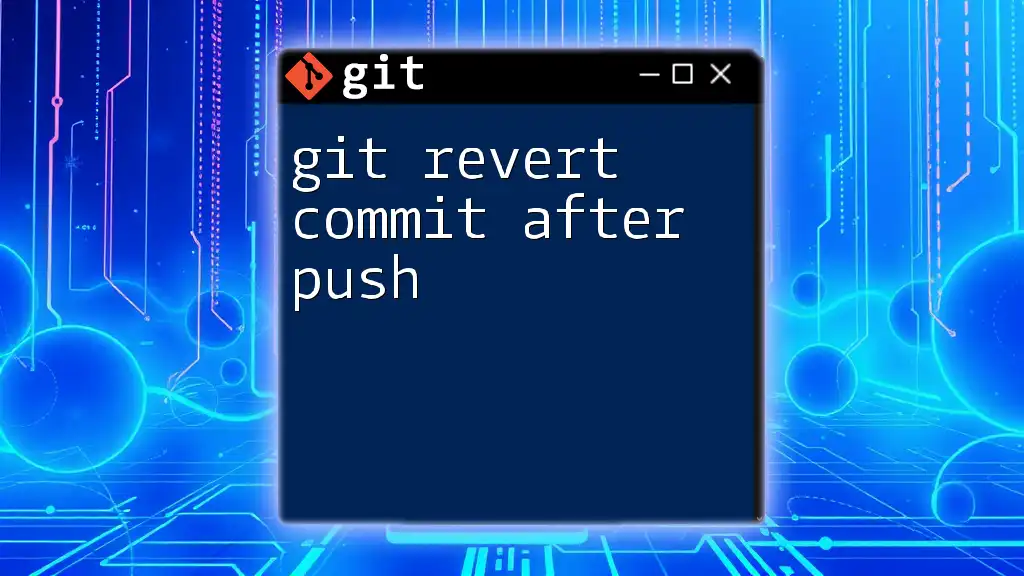To remove the last commit from a remote Git repository, you can use the following command to reset your local repository and force-push the changes to the remote.
git reset --hard HEAD~1 && git push origin HEAD --force
Understanding Commits
What is a Commit?
In Git, a commit represents a snapshot of your project at a specific point in time. Each commit is identified by a unique SHA-1 hash and contains crucial information, including the author's details, a timestamp, and a commit message that describes the change. Commit messages are vital for tracking and understanding the evolution of your project. When you make a commit, you are essentially saving your changes in the repository, allowing you to revert or review those changes later.
The Remote Repository
A remote repository is a version of your project that’s hosted on the internet or another network, accessible by multiple collaborators. Unlike your local repository, which is stored on your computer, the remote repository is stored on a cloud platform like GitHub, GitLab, or Bitbucket. Understanding the interaction between your local repository and the remote one is crucial, especially when it comes to commands like `git push`, `git fetch`, and `git pull`.

Why Remove the Last Commit?
Common Scenarios
There are various reasons someone might want to remove the last commit from remote:
-
Accidental Commit of Sensitive Information: If you mistakenly committed files containing secret keys or passwords, it's essential to remove that commit quickly to avoid security breaches.
-
Mistaken Changes: Perhaps you've added or altered files that should not have been included in the recent commit.
-
Correcting Commit Messages: Sometimes commit messages may lack clarity or accuracy, necessitating a revision.
Risks and Implications
Removing a commit, especially from a remote repository, can lead to complications. The most significant risk is disruption in team collaboration. If your colleagues have already pulled the changes, they might face conflicts the next time they push or pull updates. Therefore, always communicate with your team before performing such actions. Adopting best practices, such as creating backup branches or marking important points in your history, can help minimize potential data loss.

Steps to Remove the Last Commit from Remote
Prepare Your Local Environment
Before making changes, you must ensure you are on the right branch. Check your current branch by using:
git branch
Ensure you're on the branch from which you wish to remove the last commit.
Removing the Last Commit Locally
Using the `git reset` Command
The first step in removing the last commit is to adjust your local commit history. The `git reset` command allows you to do this, and it comes with different options based on what you intend to keep.
Soft Reset vs. Hard Reset:
- A soft reset allows you to keep your changes in the staging area, which is helpful if you wish to amend the commit or make additional changes before committing again. Use the following command:
git reset --soft HEAD~1
- Conversely, a hard reset will discard all changes made in the most recent commit, essentially reverting your working directory to match the state of the repository before that commit. If you want to proceed with a hard reset, you can use:
git reset --hard HEAD~1
Be cautious with hard resets, as this action is irreversible, and you will lose any changes made in that commit.
Pushing Changes to Remote
Force Pushing the Changes
After successfully resetting your local commit history, you can update the remote repository. To do this, you will need to force push the changes to the remote branch. This step is essential because Git prevents you from pushing changes that alter history without explicit permission.
Before executing this command, understand the implications of using `git push --force`. It can overwrite the remote branch, potentially causing issues for other collaborators working off that branch.
Execute the force push command like so:
git push origin your-branch-name --force
Always ensure that you're pushing to the correct branch and communicate with your team about this operation.
Alternative: Revert Instead of Remove
Using the `git revert` Command
If you're concerned about the repercussions of altering the commit history, consider using `git revert` as an alternative to remove the last commit. Unlike `git reset`, which removes commits from history, `git revert` creates a new commit that reverses the changes introduced by the last commit. This method is especially useful in collaborative environments.
Use the revert command as follows:
git revert HEAD
This command will generate a new commit that negates the effects of the last one, thus preserving the commit history and preventing any issues with teammates who may have pulled the prior commits.
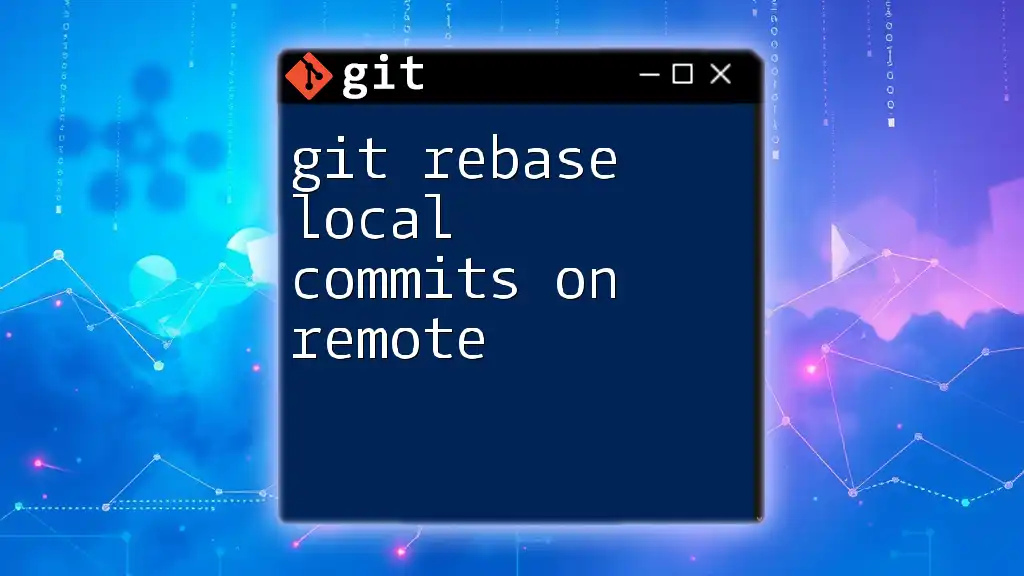
Post-Removal Considerations
Communicating with Your Team
After removing a commit from remote, it’s crucial to notify your team members. Make sure to explain the reason behind this action and provide guidance on what they should do next, such as resetting their local environment or pulling the updates. Effective communication helps maintain collaboration and minimizes confusion.
Review Branch Status
Post-push, you should verify the status of your branch to ensure everything is in order:
git status
This command will give you a summary of your working directory and staging area, helping you confirm that the last commit has been removed as intended.
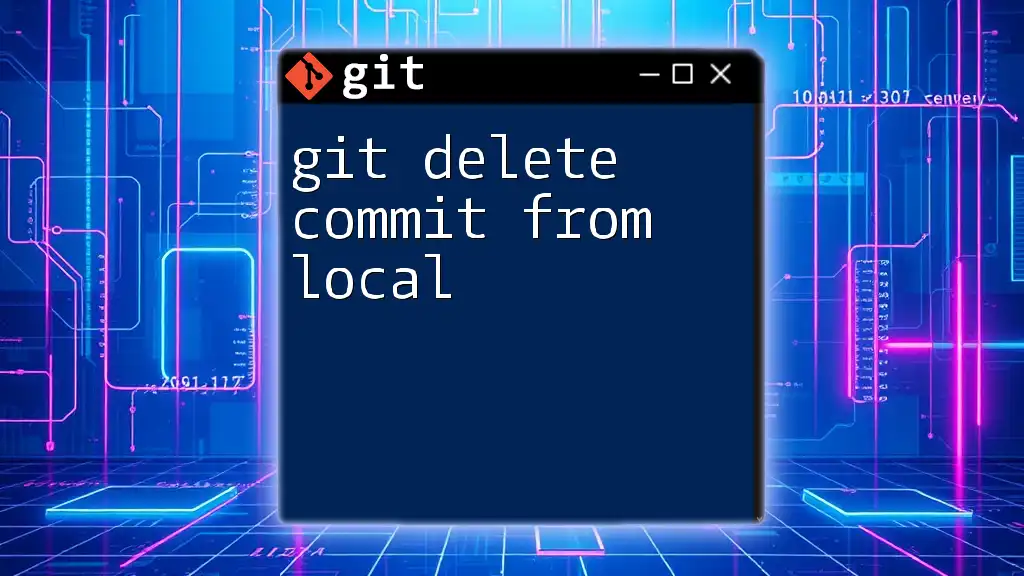
Troubleshooting Common Issues
What to Do If the Push Doesn't Work
If your push fails after attempting to force it, there are several potential reasons, including local changes that conflict with the remote repository. In such cases, you may need to resolve conflicts, using commands like:
git pull --rebase origin your-branch-name
This will incorporate changes from the remote repository into your local branch, allowing you to resolve any discrepancies.
Recovering from Mistakes
If you accidentally reset and find yourself needing to recover a commit, you can leverage Git's reflog feature to retrieve lost commits. Use:
git reflog
This command allows you to view the commit history and find the SHA of the lost commit. Once you have the SHA, you can create a new branch to recover it:
git checkout -b temp-branch HEAD@{1}
This will help you restore your work and return to a point in your commit history before the negligent reset.
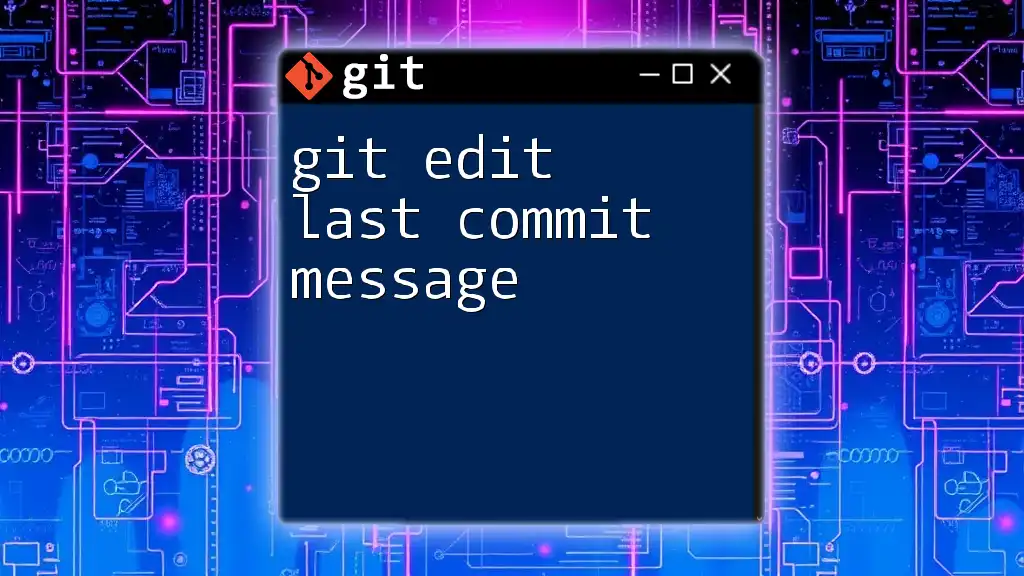
Conclusion
Removing the last commit from a remote repository is a straightforward yet delicate operation within Git. By understanding the nature of commits, knowing the risks involved, and following the outlined steps, you can navigate this process smoothly. Remember that practice is vital, and becoming comfortable with Git commands can significantly improve your version control skills.
For further resources and help with Git commands, feel free to reach out or consult additional documentation and guides available online.

